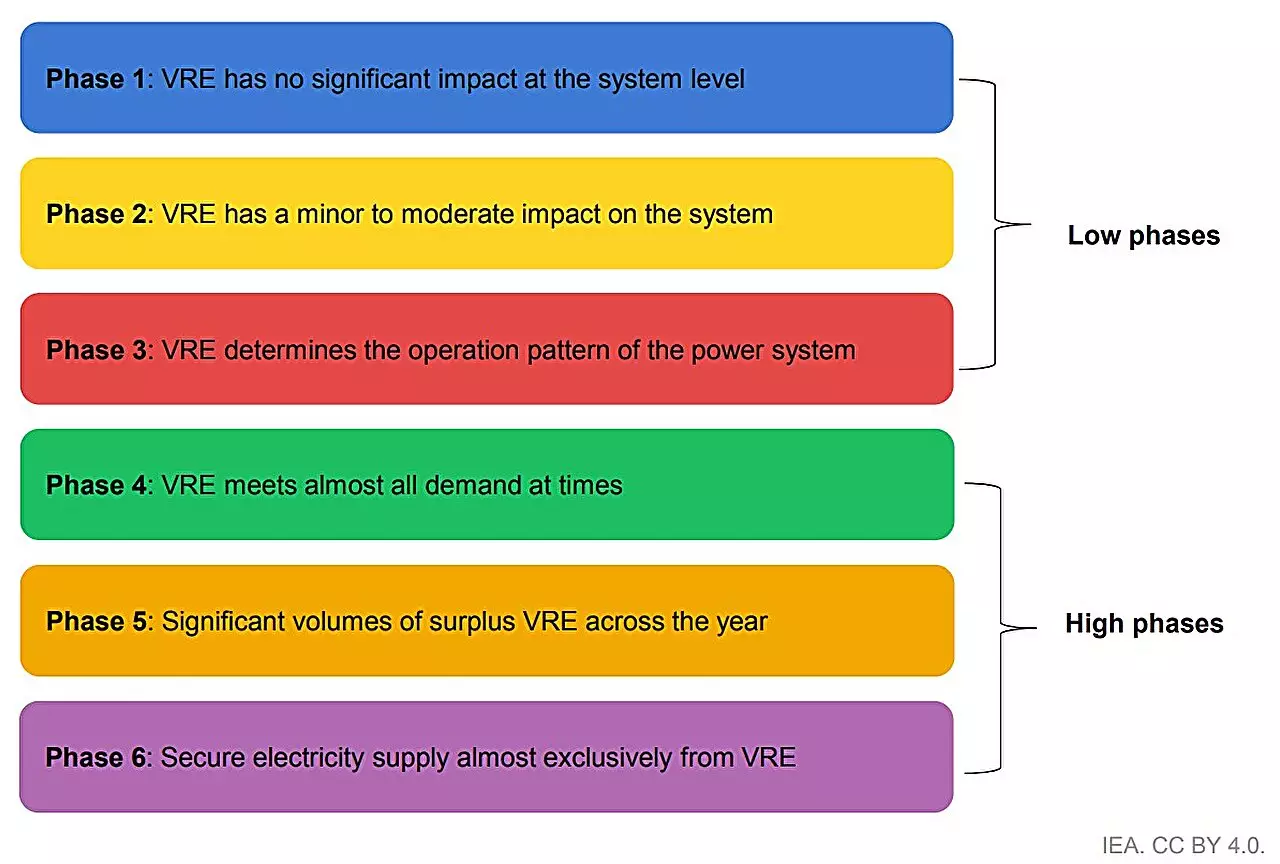The past few years have witnessed a seismic shift in the energy landscape, with solar photovoltaic (PV) and wind energy emerging as dominant players. According to a recent report by the International Energy Agency (IEA), the capacity of these renewable sources more than doubled globally from 2018 to 2023 and now constitutes a significant portion of worldwide electricity generation. As governments around the world strive to decarbonize their economies and meet energy security goals, the integration of these variable renewable energy (VRE) sources into existing power systems has become a pressing concern. This article delves into the challenges and strategies outlined in the IEA’s report, underscoring the necessity for proactive policy measures to capitalize on advancements in renewable energy.
The rapid expansion of solar PV and wind capacity can be attributed to supportive government policies, technological advancements, and decreasing costs. By 2030, these renewable energy sources are projected to continue their upward trajectory, playing a pivotal role in achieving global decarbonization targets. The report highlights that VRE technologies are essential for reducing carbon dioxide emissions, particularly within the electricity sector, where they are responsible for approximately two-thirds of the emissions reductions needed to reach net-zero status by mid-century. Nevertheless, realizing the full potential of these renewable sources hinges on their effective integration into existing power systems.
As nations scramble to harness the benefits of solar and wind energy, they encounter several substantial obstacles, primarily regarding the variability inherent to these resources. With fluctuations in output driven by changing weather conditions and time-of-day, power systems face unique challenges in maintaining stability and reliability. Failure to address these integration issues could lead to a significant loss of electricity generation capacity by 2030—potentially on the order of 15%—if timely action is not taken.
Keisuke Sadamori, IEA Director of Energy Markets and Security, emphasizes the importance of developing robust integration measures to fully realize the benefits of growing solar and wind capacities. The IEA report provides a comprehensive global stocktake of integration approaches across 50 power systems, which together represent nearly 90% of global solar PV and wind generation. This analysis reveals that countries with existing low shares of VRE can enhance their deployment without necessitating radical overhaul of their systems—simple yet effective steps are often adequate.
Strategies such as bolstering the flexibility of current energy assets, improving forecasting capabilities, and implementing incremental changes over time reveal themselves as practical measures. However, the integration of higher proportions of solar PV and wind energy introduces more complex challenges. Nations at the forefront of renewable energy integration—like Denmark, Ireland, and South Australia—serve as valuable case studies, demonstrating that it is indeed possible to navigate these challenges successfully. Their experiences highlight the necessity of investing in energy storage solutions and developing advanced grid technologies that facilitate the management of output fluxes throughout the day and across seasons.
Solutions to emerging integration hurdles are available, with most either being well-established or nearing maturity. However, the key to a successful integration of variable renewables lies not only in technological advancement but also in the formulation of appropriate policy and regulatory frameworks. The IEA’s report stresses the need for a comprehensive rethinking of how energy systems are planned and operated in light of increasing renewable deployment. Policymakers must adopt a forward-thinking approach that embraces innovation while also ensuring sufficient stability and flexibility in power systems.
The effective incorporation of higher levels of variable renewables requires a coordinated global effort, as disengagement or delay in action could undermine the significant strides made toward clean energy transitions.
As the world’s energy landscape continues to evolve, integrating solar PV and wind energy has emerged as a crucial call to action for governments, industries, and communities. The findings of the IEA report not only illustrate the challenges ahead but also emphasize the opportunities that lie in adopting innovative integration strategies. The success of renewable energy transitions relies on collective action and commitment to fostering an energy future that embraces sustainable practices. The time for decisive measures is now; the benefits are too significant to overlook.


Leave a Reply